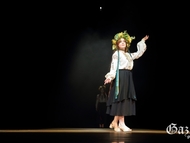
From June 28 to July 24, I had a chance to experience a new cultural environment and a new country through Keimyung. I chose India because I wanted to have a special experience even though it might have been more comfortable to travel to New York or London.
I arrived in Mumbai and then I went to Aurangabad, Ellora, Ajanta, Bhopal, Sanchi, Agra, Varanasi, Delhi and McLeod Ganj. There, I saw various cultures and felt something different. Agra where the Taj Mahal is located, Varanasi where the Ganges River is located, and McLeod Ganj, in which the 14th Dalai-Lama lives, stay in my mind as memorable places.
The Taj Mahal is the most famous and well-constructed building in India. Shah Jahan, a King of the Mughul Empire, built it for the purpose of admiring his wife. It was built over 22 years, starting from 1632, and it cost a lot of money. 20,000 people and 1,000 elephants were used to construct it. On the completion of the Taj Mahal, Shah Jahan cut artisans’ hands for fear of disclosing the techniques. I couldn’t take my eyes off the Taj Mahal because I was so astonished to see the brilliant shape of the construction and its grandeur. Made of white marble, it created a wonderful harmony with its design. While appreciating the construction, I heard it is very difficult to keep the Taj Mahal in a good state due to pollution and acid rain, which makes me anxious about losing this great monument.
Next, I went to Varanasi by train. To Varanasi it took 16 hours. Varanasi had a mysterious atmosphere and it is a very curious city. It’s very difficult to describe it. The Ganges River is too dirty to wash or put laundry in, but the locals were swimming, praying, washing and drinking there, which I couldn’t easily understand. They regard the river as a holy thing. In addition, when people die, they throw the dead bodies into the Ganges River after cremation because they think the dead bodies can go to heaven after the ceremony.
McLeod Ganj is famous for the location of the government of Tibet in Exile, led by the 14th Dalai-Lama. After 1950, Tibetans took refuge in McLeod Ganj from the invasion by China. There were over 6000 Tibetans and they formed their own culture, which made it confusing as to whether this place was India or Tibet. The Tibetans welcomed travelers with warm smiles and wrote "Free Tibet" in many souvenir shops and restaurants. I felt sad because it was similar to when Korea was ruled by Japan in the past.
Finally, I want to thank Keimyung University for giving this chance to gain such a precious experience.
By Choi Eui-hyun
Sophomore, Dept. of English Lang. & Lit.
Sophomore, Dept. of English Lang. & Lit.








